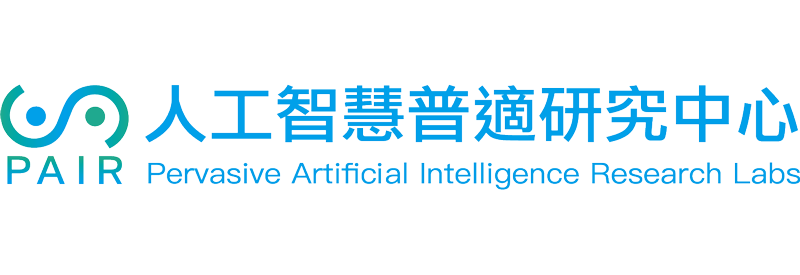Pervasive Artificial Intelligence Research (PAIR) Labs
Development of Theory and Systems of Robot Learning from Human Demonstration (LfD)—Development of Learning from Human Demonstration Robot
Principal Investigator: Professor Wei-Yen Wang
—
Summary
In this project, we develop three kinds of robotic systems with artificial intelligence (AI). First, we design a mechanism to draw Chinese calligraphy and automatically modify the motion of the robotic arm by the feedback image information. Moreover, we propose a learning theory to train the robotic arm to draw Chinese calligraphy in our self-built virtual machine. Second, this project has presented a method to develop systematic learning for robots from human demonstrations. The proposed robotic arm system is capable of active learning and inference. Last, we design and build a two-wheel self-balancing robot with human identification and following.
Keywords
Learning from Demonstration (LFD), Deep Learning, Robotic Calligraphy System, 6-Axis Articulated Robotic Arm, Two-Wheel Self-Balancing Robot.
Innovations
- We combine YOLOv2 and with an improved network structure to complete recognition and segmentation of Chinese calligraphy words.
- We propose a learning theory to train the robot to write in Chinese calligraphy in the simulation environment.
- We design a mechanism to draw Chinese calligraphy and automatically modify the motion of the robotic arm by the feedback image information.
- This project has presented a method to develop systematic learning for robots from human demonstrations.
- Regarding the construction of the database, we developed a novel generator. Then, we utilize a CNN-based object recognition model to distinguish between two types (i.e., user and non-user) of data.
Benefits
- A novel robotic calligraphy system is developed and can automatically modify the motion of the robotic arm for drawing Chinese calligraphy.
- A virtual calligraphy system is also built for the robot to perform try-outs. It learns how to write in Chinese calligraphy according to our novel reward and punishment rules.
- Our robotic arm system can not only be taught by humans through demonstrations, but it can also adjust its behavior by itself.
- We apply deep learning to human recognition and the development of the follow-up system.
- In the future, we do not only focus on vision-based tasks, but also consider the other human senses, such as hearing and touch.
- This project will implement the proposed intelligent algorithms at the integrated circuits level to increase the performance and flexibility, and it can promote robots application to more other domain.

